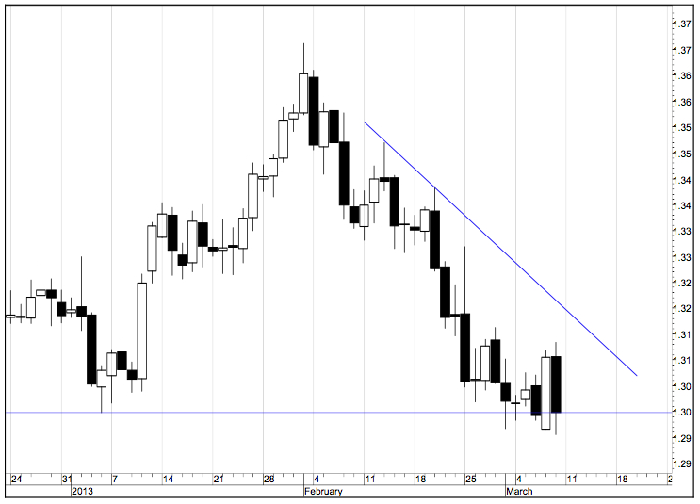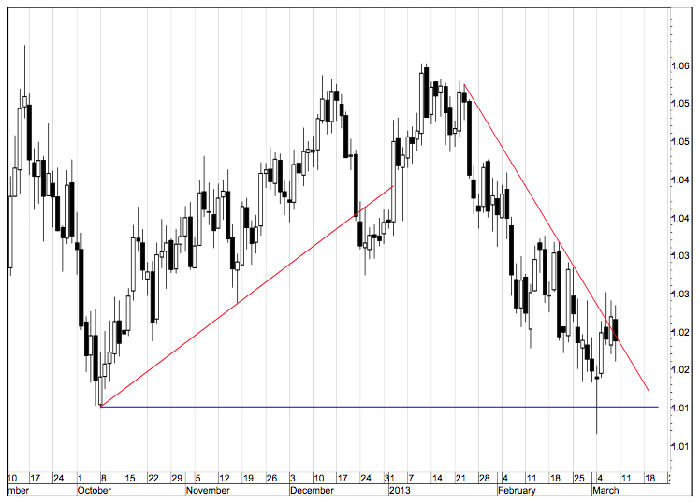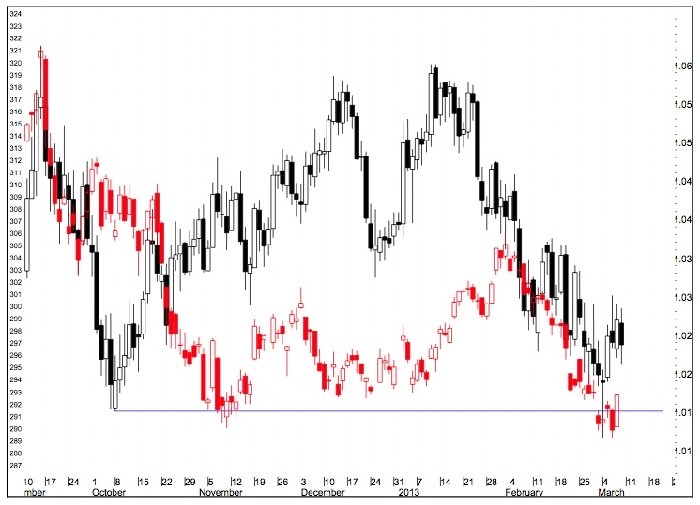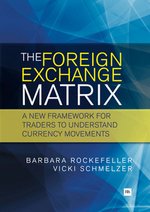Top Forex PairsForex is the largest market in the world and trades around the clock. Which currency pair is trending the strongest RIGHT NOW? Find out what pair is topping our list and where is it going, view this list for free now! Todays Top Performing Forex Pairs
|
Testimonials
Great
site Kenny.
Technical
Analysis written in a straightforward way so that everyone understands.
There's
only a small few who get it consistantly correct and you are certainly
in
that group.
Chris
|
Thanks
for putting this all together and sharing! BHW
|
Awesome
Stuff! Kenny has shown time and time again the ability to show us direction in
these markets. Khalsa
|
Kenny, I appreciate your insight and analysis. You make sense of what I can rarely see.
Thanks for sharing. Gene
|
Took a gold short at 1240
just closed at 1203 :-)))))))))))))))))) ........ top call!! Gekko |
|
|
How
to
Prepare for an Event Driven Trade
How to Prepare for an Event Driven Trade: Article By Barbara
Rockefeller and Vicki Schmelzer, Authors of The
Foreign
Exchange Matrix
The retail
trader is always at the
mercy of the big banks and brokers who are busy executing trades for
assorted fund managers the true drivers of FX trends. Whether these
funds are hedging an equity or fixed income position or taking an FX
position for their own account, fund managers are the ones whose
sentiment we want to figure out. Since the FX market is essentially
private, with each trade a confidential contract between the bank and
the customer, we never get any usable information about volume or about
any particular player taking a big position. In years past, we knew
about the Soros bet against the pound and the Buffett bet against the
dollar, but nobody today can tell you that on March 7 it was Fund X or
Mr. Y buying the euro after the European Central Bank left rates on
hold and Mr. Draghi walked around the question about whether the euro
is too strong, for example.
But we can make a pretty good guess that this would be the outcome. In
preparing for a trade ahead of a market-moving Event, you need to have
an understanding of the “deep bias” toward a currency as well as the
“current risk sentiment climate”—before you even look at the chart.
| Learn.
Practice. MAKE MONEY!
With a Stock Market
INVESTING course Click
Here
|
Deep
Bias
First, we
know that a central bank lowering interest rates is currency-negative
and raising them is currency-positive, but we have to acknowledge that
deciding not to cut rates is very nearly the same thing as raising
them. Second, we know that Mr. Draghi has a bias toward keeping rates
on the high side because he disapproves of spiking the punch bowl when
what economies really need to recover is German-style reform of labor
markets and government spending.
Third, despite efforts by France and some other eurozone countries,
jawboning about how a too-strong euro harms exports was repudiated, and
by none other than Mr. Draghi. Currency war rhetoric is a powerful
tool—for example, see the Australian dollar but of limited application
in the case of the euro, if the one guy with the tools to actually
implement currency weakening explicitly refuses to use them for that
purpose.
Overriding this all is the market’s deeper long-standing bias in favor
of the euro, sovereign debt crises notwithstanding. That is because to
the saver and long-term investor, the eurozone’s commitment to
controlling inflation through monetary policy and contractual budget
limits is the gold standard of fiscal excellence. No sovereign in the
history of the world has ever done it before, and never mind that the
eurozone is not actually a true sovereign in the old-fashioned
definition of the word. The no-inflation promise imbues the euro with
an allure no other currency enjoys. On the surface, the euro seems able
to withstand economic and institutional setbacks that would crush
another currency.
The euro has magic—but not a free pass. A rate cut in early March would
have pushed it down, at least for a while, and as the next policy
meeting in April comes closer, we will probably have the same wobbling
lower on uncertainty over whether the ECB will cut.
Risk
Sentiment
Almost as
strong as deep bias and sometime overriding it is current risk
sentiment, which in the case of the euro in recent years arises from a
single source—peripheral debt problems. When peripheral country spreads
are narrowing vis-à-vis German Bunds, risk appetite for the euro is
positive, whereas when peripheral spreads are widening versus Bunds,
risk appetitive for the euro is negative. At the time of the ECB policy
meeting on March 7, crisis conditions occasioned by the Spanish banking
sector and by the Italian election were fading away. Peripheral yields
had been falling back to normal levels and narrowing versus German
Bunds, and a few hours ahead of the ECB rate decision, that Thursday
Spain even issued over €5 billion in new 10-year notes under 5%, the
lowest level in two months. To lower eurozone interest rates would have
been to rock the boat.
Adding up the deep bias and the risk sentiment at the time, the
probability of an ECB rate cut was very low and from that, we deduce
the euro was likely to rise off temporary new lows under 1.3000.
The
Chart
That doesn’t
mean that fund managers and others wouldn’t reduce euro positions if
certain developments on the chart caused them to doubt the big-picture
analysis. In this instance, we had the euro falling from the February 1
high at 1.3711 to a new low of 1.2967 on March 1. If you can see a
chart of the euro on a 240-minute basis you will see six waves. Forget
how
many waves a certain theory
says there should be. This time, there
were six distinct occasions when the euro bottomed, recovered partway
but not to the previous high, only to fall again to a new lower low.
Sometimes, we have three waves and sometimes we have ten, but six is a
lot. The key point is that any corrective recovery will likely be
limited by the previous intermediate high, and choosing the previous
intermediate high depends on what timeframe you choose.
Also, the moves occurred over a one month period, or roughly 20 days.
For short-term trends and at times larger directional changes, do not
sneer at the 20-day moving average. It may be an old-fashioned
indicator but it’s a rock-solid one and one that some central banks
still watch (such as the Bank of Japan). This time, the euro fell under
the 20-day moving average in the second wave down.
Now to the important point—near the US close the day before the ECB
policy decision and Draghi press conference on March 7, the euro hit a
low of 1.2983, or 17 points above the previous low from three days
before. But the Asian session, taking over from the US, took the euro
to 1.2966 early on March 7, or one point lower than the previous lowest
low. And yet, that one point is all we got. Traders declined to take it
any further. This is a failed test of a lower low and embodies the
information that ahead of the ECB decision and Draghi speech, traders
were feeling cowardly about betting against the euro.
At this point, a savvy day trader would set up a buy order at some
“prove it” level above that lowest low.
What is a “prove it” level? It’s the level at which uncertainty falls
away and your confidence in the long position becomes compelling. One
old standby is the most recent intermediate high, in this case 1.3075.
But that’s pretty far away from 1.2966, over 100 points and it leaves
too much on the table. We have the same complaint about the
double-bottom pattern that generally points to a rally.
A day-trader
doesn’t have the time to wait for confirmation (price over the middle
bar of the W at 1.3075.
Another idea is when the euro rises by some percentage of the Average
True Range. On the daily chart, the 5-day ATR ranges from about 90 to
116 points over the past month. If we take 40% of the average (103), we
think a rise off the low by 41 points is a prove-it level. As a happy
coincidence, adding 40 points to the extreme low brings the prove-it
level to 1.3007, just a little bit over the “round number.” Again,
don’t laugh. Some folks place stops and targets at round numbers and a
research paper by the US
Federal Reserve
a few years ago showed that
round numbers (and even numbers) occur far more often than chance would
allow.
We now have a reasonable
expectation of a successful euro long by
entering into this position at 1.3007. What’s the stop? Well, we
already know traders chickened out at 1.2966, so that’s a good stop, or
maybe a little under the level. Traders often leave their stops five or
ten points lower, and sometimes 20 points below, a prior low. But we
have to be realistic about our take profit versus stop-loss ratio We
always want our target to be a bigger number than the stop, since over
time, even a 51% rate of profitable trades will be net profitable when
losses are controlled. Here comes the hard part: if we set a target at
(say) 60% of ATR, does it result in a price that is likely to be
reached within our trading timeframe? In this case, 60% is 62 points,
which we add to our entry at 1.3007 to get 1.3069. Note that this
number is less than the previous intermediate high at 1.3075, and we
like that, because we are not taking the risk of the previous
intermediate high becoming resistance. Here too, traders
often do not use
a formula to ascertain their
take profit levels, but
merely do so ten or 20 points before the prior high or low.

How
to Prepare for an Event Driven Trade Figure
1:
Buying on
Failed Test of Old Low (Euro Daily March 10, 2013)
In the end, the euro hit a high of $1.3118 after the Draghi press
conference, so we have plenty of wiggle room in this trade. That’s an
important consideration, because on a day without an event-trade, we
can’t count on ATR being bigger than the usual average 103 points. By
using the prove-it tactic, we need the ATR to be sizeable. This brings
up the observation that “trading the news” can be high-risk. However,
the bigger the news, the higher the probability of a profitable trade
if your entry level is correct. The problem with trading big news
around the ECB decision is that you absolutely, positively need to have
the right interpretation of both the deep bias (euro = gold standard)
and the risk sentiment (good risk appetite in the absence of crisis).
By getting those two things right, you are in sync with the big players
and thus joining their table instead of seeking scraps from their
table. See Figure 1. You may not see their flow advantage but having
the right understanding of market conditions does level the playing
field.
This little case study shows that in FX
trading,
your goal is to make a
profit by reading the mind of the big players and copying their
actions. The fundamentals come first, both the deep bias and the
current risk sentiment reading. - A
look at technical and a good
chart
comes second, but is no less important, because strategy depends on
getting the entry, stop and target levels within the realm of positive
expectancy of a gain. It wouldn’t do any good to set a stop likely to
get hit on an ATR basis or to set a target far outside the likely ATR,
i.e., wishful thinking.
Of course, you may decide
to trade on a shorter timeframe or to use
other, fancier indicators, but the
lesson is that simple indicators can
be and often are sufficient. That is not to say that
combining deep
bias with current risk sentiment cannot get tricky. Consider the
Canadian and Australian dollars. We have a long-standing deep bias to
buy these currencies because of their correlation with commodity
prices. This seems to be fine as long as commodity prices are rising or
falling in a non-volatile way, but is not actually the basis of deep
bias. Instead, the correlation of the commodity currencies with
commodity prices is a risk sentiment factor. Deep bias arises from
factors internal to those countries, including capital investment,
interest rate policy, and growth rates. Yes, the commodity sector is
critical to the deep bias, but it’s only one of several factors. It’s
an error to consider all of those other factors as somehow belonging to
the risk sentiment barrel. For example, employment and job creation has
an existence independent of commodity prices and commodity exports, and
can influence the central bank, whose policy belongs to deep bias.
Confusing matters recently has been currency war rhetoric, which
sometimes overrides both deep bias and risk sentiment.
 How
to Prepare for an Event Driven Trade Figure
2:
Disorderly
Chart Arising From Muddled Analysis (March 10, 2013)
How
to Prepare for an Event Driven Trade Figure
2:
Disorderly
Chart Arising From Muddled Analysis (March 10, 2013)
The mix of muddling deep
bias with risk sentiment along with an overlay
of currency war rhetoric results in a disorderly chart. See
Figure 2. You can trade the AUD/USD, but not easily and not by trying
to think like the big players. You can’t tell what big players are
thinking from this chart. We can merely deduce that commodity prices
alone are not driving the AUD/USD—see Figure 3. It is our observation
that intermarket correlations are consistent and reliable only when
overall financial market conditions are tense and uncertain. You should
certainly not consider commodity
prices
alone as setting the deep bias
tone, and over these few months, not consistently setting the risk
tone, either.
<
 How to
Prepare for an Event Driven Trade Figure 3:
Risk Factor
Alone Fails (USD/AUD vs CRB INdex (Red), March 10, 2013)
How to
Prepare for an Event Driven Trade Figure 3:
Risk Factor
Alone Fails (USD/AUD vs CRB INdex (Red), March 10, 2013)
It may seem
too obvious to mention, but an orderly chart is easier to
trade, especially when you understand the interaction between deep bias
and risk sentiment and how it is playing out on the chart. A disorderly
chart reflects confused thinking about what is fundamental deep bias
and what is risk sentiment. Bottom line, if you can’t read the chart
and imagine what the big players must be thinking, you shouldn’t try to
trade it, even when the
most sophisticated of
indicators are giving you
the go-ahead. Clear thinking leads to profitable trades.
Return to top How
to
Prepare for an Event Driven Trade: Article By
Barbara Rockefeller
and Vicki Schmelzer, Authors of The
Foreign Exchange Matrix
Return
to Part 1 of our Forex
Trading series.
|
 |
The Foreign
Exchange Matrix
A new framework for understanding currency movements
By: Barbara Rockefeller,Vicki Schmelzer
Format(s): Paperback, Ebook
ISBN(s): 9780857191304, 9780857192707
Published: 11 February 2013
Edition: 1st
Publisher: Harriman
House
Available from: Harriman House and Amazon |
|
|